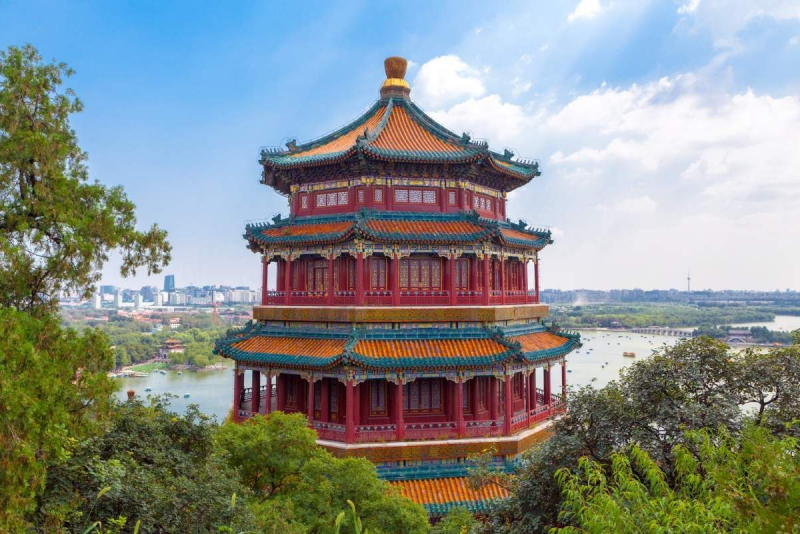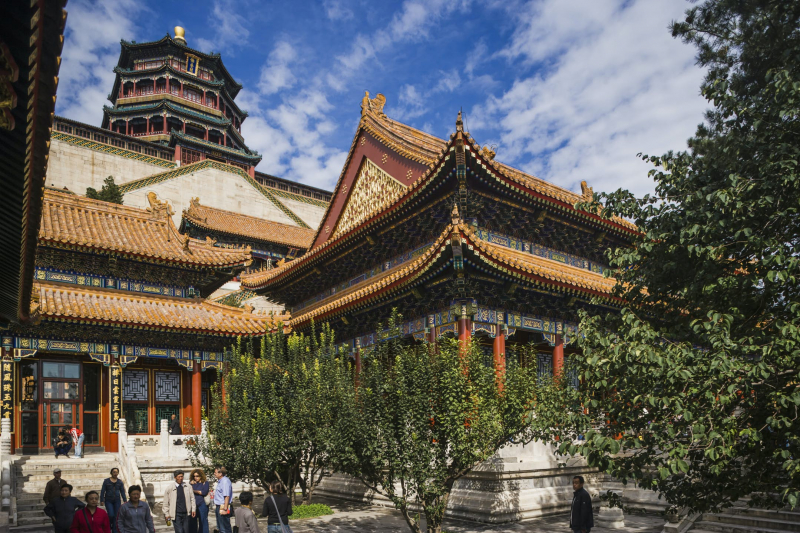The Summer Palace

The Summer Palace in Beijing – first built in 1750, essentially destroyed in the war of 1860, and restored on its original foundations in 1886 – is a Chinese landscape garden design masterpiece. The natural landscape of hills and open water is combined with artificial features such as pavilions, halls, palaces, temples, and bridges to form a harmonious ensemble of outstanding aesthetic value.
Beijing's summer palace integrates numerous traditional halls and pavilions into the Imperial Garden conceived by the Qing emperor Qianlong between 1750 and 1764 as the Garden of Clear Ripples. Using Kunming Lake, the former reservoir of the Yuan dynasty's capital and Longevity Hill as the basic framework, the Summer Palace combined political and administrative, residential, spiritual, and recreational functions within a landscape of lakes and mountains, following the Chinese philosophy of balancing the works of man with nature.
The connecting Residential area comprises three building complexes at the Summer Palace: the Halls of Happiness in Longevity, Jade Ripples, and Yiyun, all built up against the Hill of Longevity, with fine views over the lake. These are linked by roofed corridors connecting the Great Stage to the east and the Long Corridor to the West. The remaining 90% of the garden provides areas for enjoying views and spiritual contemplation and is embellished with garden buildings, including the Tower of the Fragrance of Buddha, the Tower of the Revolving Archive, Wu Fang Pavilion, the Baoyun Bronze Pavilion, and the Hall that Dispels the Clouds. Kunming Lake contains three large islands corresponding to the traditional Chinese symbolic mountain garden element, the southern of which is linked to the East Dike by the Seventeen Arch Bridge. An essential feature is the West Dike, with six bridges in different lengths. Other essential features include temples and monasteries in Han and Tibetan style located on the north side of the Hill of Longevity and the Garden of Harmonious Pleasure to the northeast.
As the culmination of several hundred years of Imperial garden design, the Summer Palace has significantly influenced subsequent oriental garden art and culture.
















